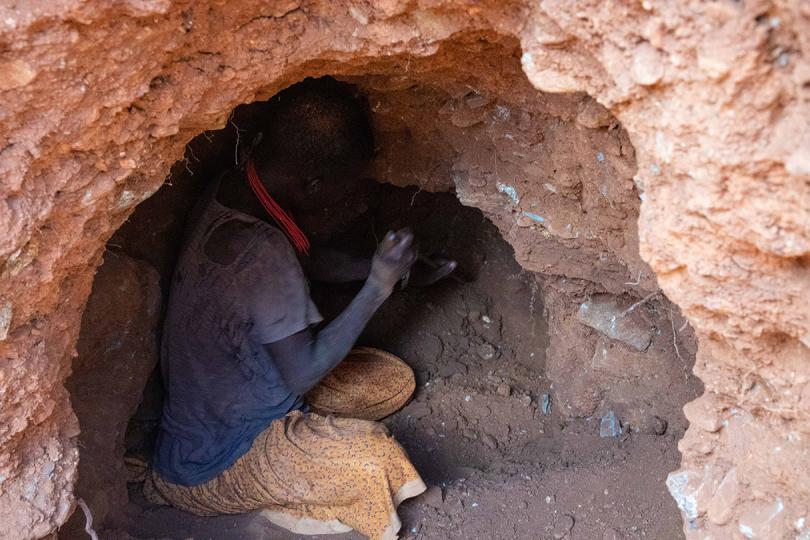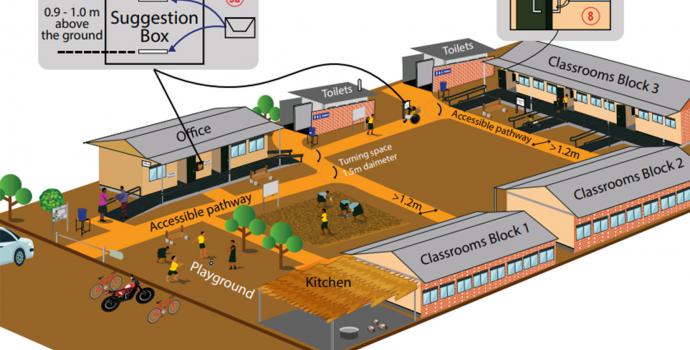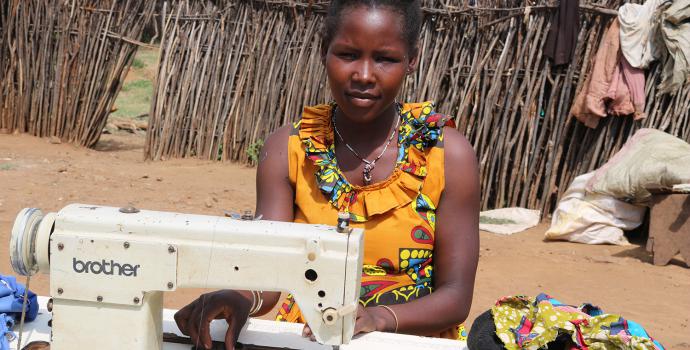Shielding Children from the bonds of Child Labor

By: Derrick Kyatuka, Content and Communications Manager
Deborah, a 16-year-old girl, endured a challenging childhood marked by harsh realities of artisanal gold mining in Moroto district. Despite facing child labor and exploitation, she worked tirelessly alongside her parents to support their family.
The visible scars on her body bear witness to the hardships she endured. Deborah’s determination to supplement her family’s income kept her focused-on mining, despite her love for education. The dangerous conditions in the mines, including the lack of medical facilities and the risk of accidents, made life perilous for children like her.
Deborah experienced a personal tragedy when her cousin brother was buried in a mining accident. The turning point in Deborah’s life came when her mother informed her about Save the Children seeking to rescue children from artisanal mining.
Deborah eagerly registered for the program, underwent training in tailoring, and received a start-up kit. She successfully started her own tailoring business and, driven by an unquenchable thirst for formal education, decided to resume her studies.
Now back in school, Deborah not only excels academically but also serves as the head girl. Her resilience and determination have transformed her life, and she aspires to become a doctor in the future.

Deborah attending class
For Innocent,14, the same hands that used rudimentary tools, washed soil for long hours under the scorching sun on an empty stomach in search of gold particles now hold a pen in class writing a new chapter of his life.
“I felt relieved after getting out of the mines. Being in school has helped me get involved in different activities like young farmers club, and drama club, get new friends that have helped me heal from my past.” Says Innocent.
He is now determined to keep in school and help his parents in a better way with a descent job when he completes education.
Since 2019, Work No child’s business (WNCB) programme in partnership with Save the Children, Hivos, Uganda National Teachers Union (UNATU), Nascent Research and Development Organization (NRDO) and Environmental Women in Action and Development (EWAD) have tirelessly worked in unison ensuring that children and youth are free from child labor and enjoy their rights to quality education and (future) decent work.
The programme targets children in the age group 05-13 years and 14-18 years in the two districts of Nakapiripirit and Moroto through its 5 years of implementation, strengthening child protection system like case management support with start-up kits, constructing play structures, and mentorship sessions and skilling.
Maggie Lolem, the Community Development Officer of Moroto says before the intervention, the district was grappling with high cases of child labor that left hundreds of children in agonizing pain.
“Our region has a long history of hunger, poverty, and drought. Most children engage in mining for survival because their parents are unable to provide for them. When this progamme started, a lot of community sensitization on the dangers of child labor was done and construction of play centres for children near the mines. These centres have acted as mobilization grounds for children to join school and skilling. The project has also given parents livelihoods support.” she says.

The project has so far rescued 1,398 children from the mines in Karamoja
Caroline Adio, the project manager notes that the programme works with the private sector, business community, local government and the Ministry of Gender, Labor and Social Development to influence by laws to ensure children are not engaged in child labor.
“We have trained mining companies in the region on child labour laws and code of conduct and these companies have adopted guidelines and put in place policies that prohibit children from working in the mines,” she says.
Adding that; “When we rescue children out of the mines, we rehabilitate them and support them to join school. Those of adolescent age, we engage them in skilling programs in different enterprises with hope of giving them a promising life for self-sustainability. So far, the project has rescued 1,398 children.”.
With the project now in its last year of implantation, different actors have been mapped out to roll-out the strategy once the project comes to an end.
“We have built the capacity of 43 community-based para-social workers who work hand in hand with the local government to identify child protection cases and refer them to government. We also have male champions for the agents of change and ensuring that guidelines in relation to ending child labor are incorporated in the subcounty and district development plans.” Caroline adds.




